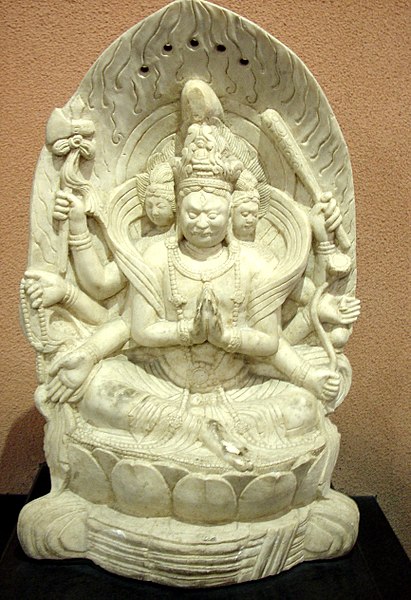
Matou Guanyin (Hayagriva)
Tang Dynasty
Beilin Museum, Xi'an
The Tang Dynasty saw the introduction of esoteric Buddhism into China, as illustrated by this statue, which has three heads, four pairs of arms, and a seated Amida buddha in his crown. His visible attributes include a lotus, rosary, club, and axe. The figure's lotus and rosary, and most of all the seated buddha in his crown, are strong evidence that this is a form of Avalokiteshvara (Guanyin). But the question is, which form? Given the figure's weapons and three heads, and assuming that the broken-off element on top of his crown was originally a horse-head, this figure can be identified as Hayagriva.
Originally, in India, Avalokiteshvara was a simple and uncomplicated bodhisattva, derived probably from Padmapani the Lotus Bearer. In the development of Mahayana Buddhism he picked up some fierce aspects (weapons, multiple heads). The form seen here is simultaneously fierce and benign, a masterpiece of reconciled opposites. This equilibrium, however, could not hold: the Hayagriva form of Avalokiteshvara became the fierce Bato Kannon of Japan, while the root form of Avalokiteshvara became the kindly and salvific Guanyin of China and Japan.


